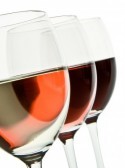Alt Investments
Wine Fund Says "En Primeur" Leaves Sour Taste For Investors, Advises Against It

The practice in the wine investment world known as en primeur has come in for a broadside by a fund specialising in investing in the great houses of Bordeaux.
While devotees of the noble grape will cavil at the idea of fine
wine as an investment asset on a par with equities or bonds -
surely the point is to drink it eventually - the great houses of
Bordeaux, Burgundy and some select others have found a niche in
recent years. Fine wine is thought of as an asset rather like
art, classic cars and jewellery.
But with all markets, practitioners can disagree sharply on
whether certain ways of operating are worth it. Over at The Wine
Investment Fund, a London-based fund only investing in Bordeaux
fine wines, its managers have sharply attacked the practice of
pre-selling the latest vintage, a process known in the trade as
“en primeur”. TWIF is represented in centres including Hong
Kong and Bermuda; it is also available worldwide on a variety of
platforms. Since the base month of March 2004 when net asset
value was set at 100, the NAV stands at 227 as of March this
year, according to its website.
With en primeur, the liquids created in the region are
not bottled or made available to the market for as long as a year
or more but they are bought and sold without parties having a
definite proof of how good the vintage turns out to be. The
chances of getting the gamble right is why this market
exists.
But not everyone is convinced this technique is worthwhile.
The
Wine Investment Fund says that since its founding in 2003, it
has questioned the logic of buying wines en primeur
because, it argues, returns achievable are not justified by the
higher volatility in the price of these wines during this
period.
TWIF says that a person buying en primeur is purchasing
the right to a future benefit (delivery or ownership of a wine)
by giving some benefits today (the cash which has been paid, plus
any interest or other return which could be earned on this cash).
To compensate the buyer for such uncertainty, the buyer hopes or
expects that the price of the wine when it is physically released
and ready to be drunk is higher than on release. TWIF says its
analysis shows that, up to and including the 2000 vintage, en
primeur was the most efficient way to tap the market, but
this has not been the case since the turn of the century. The
very popularity of this method has been its undoing, TWIF
says.
“Ironically, it was the very success of the high profile 2000
vintage from the point of view of the collector or investor which
began to undermine the en primeur system and may
eventually lead to its demise,” Chris Smith, analyst at TWIF,
said in a note.
His colleague, Andrew della Casa, founding director at TWIF,
added: “We have always excluded en primeur from our
portfolios at TWIF, considering it a sub-optimal way to invest in
wine. It now looks as if our view is finally becoming
mainstream. We continue to advise investors to avoid en
primeur. Unlike many commentators, who may have a
vested interest in promoting wines en primeur, at TWIF
our role is to analyse the wine market objectively and take
whatever approach is most beneficial for our investors.
Buying wines en primeur has never been part of that
approach."
The wine fund argues that by 2000, châteaux owners, who had seen
the big profits made from en primeur, became determined not to
lose out, and released their wines at a higher price.
While some vintages may still have produced good returns, they
were outpaced in investment terms by wines which were/are
physically available in the marketplace, TWIF says. It adds that
the method is still used due to inertia in the traditionalist
wine trade, and the issue of branding. On the second point, TWIF
argues that the top names in the Bordeaux market have become
global luxury brands, so it is difficult to cut prices if there
is a poorer quality year or if there are big price falls in the
wider market, as this would undermine the brand.
“The 2013 vintage has now been released and the wines are
described as the worst since 1997 or possibly 1987. It is
the third weak vintage in a row, and large stockpiles of these
poorer wines remain in the distribution network. Everything
points to the need for a sharp drop in prices, but an
understanding of the main forces at work (inertia, decreasingly,
and brand position, increasingly) suggests that this may not be
forthcoming,” TWIF adds.
Missing a point?
At Berry Brothers & Rudd, the renowned wine merchant dating back
to the late 17th Century, the firm said TWIF’s comments made some
sense on the investment side, but added qualifications.
“We have to remember that wine is a food product made to be drunk
and enjoyed and speculation is only a micro part of the reason
wine is purchased. Also, not taken into account is the fact that
Bordeaux is a victim of its own political game but in essence
some of the wines are really good value,” the firm told this
publication, adding that in its view, the transparent Bordeaux
market favours the end-consumer by enforcing lower margins
compared to other regions.